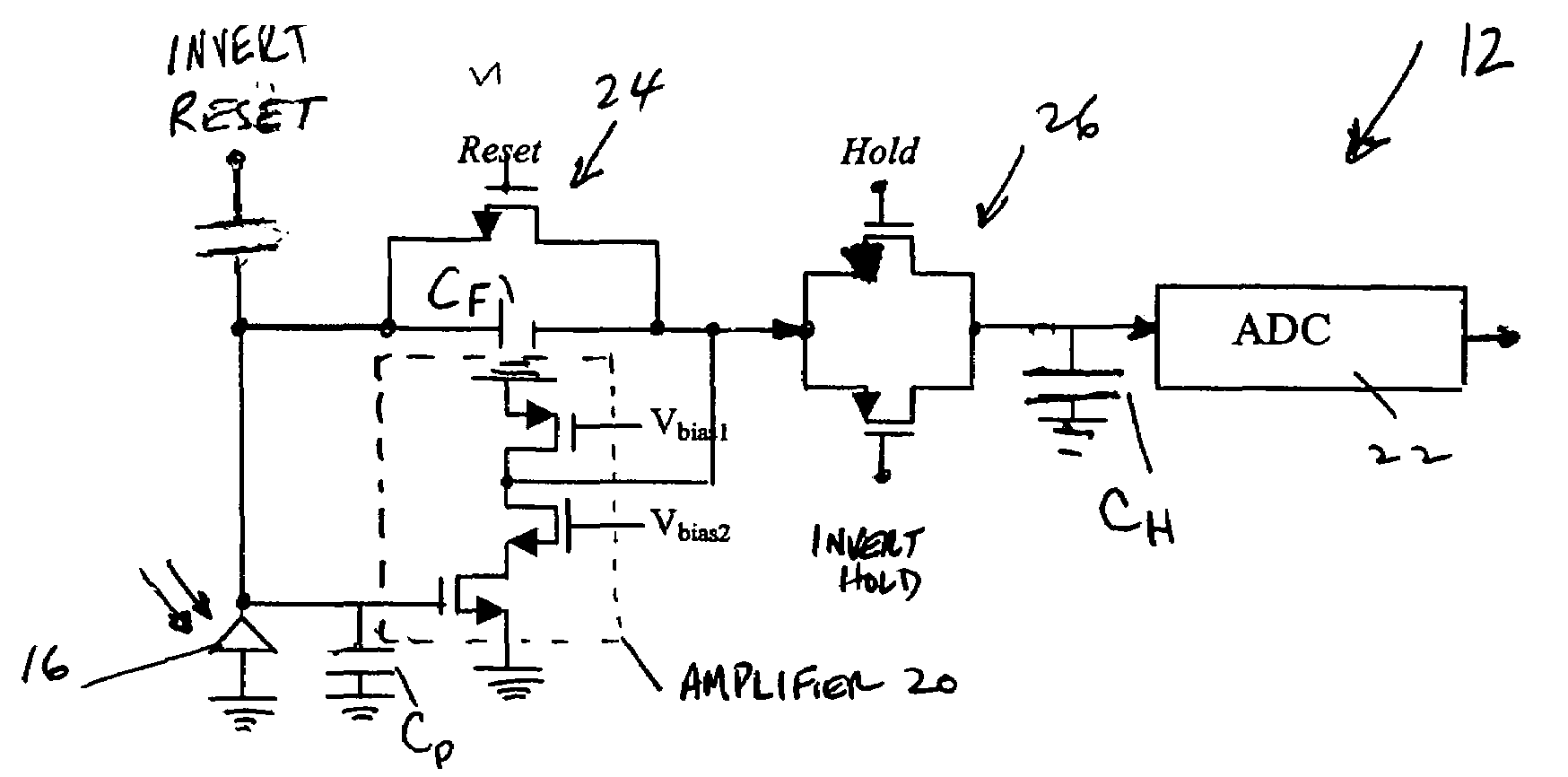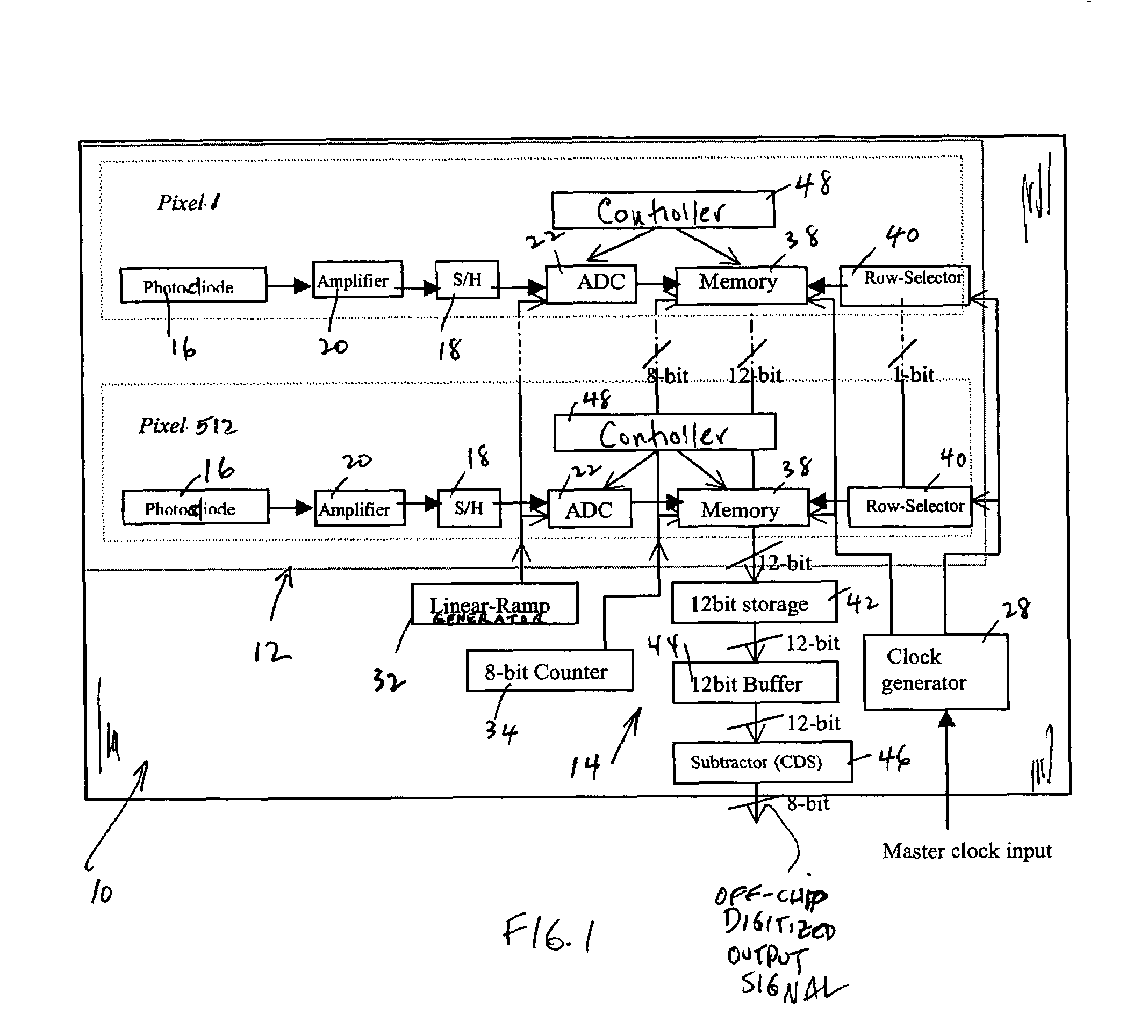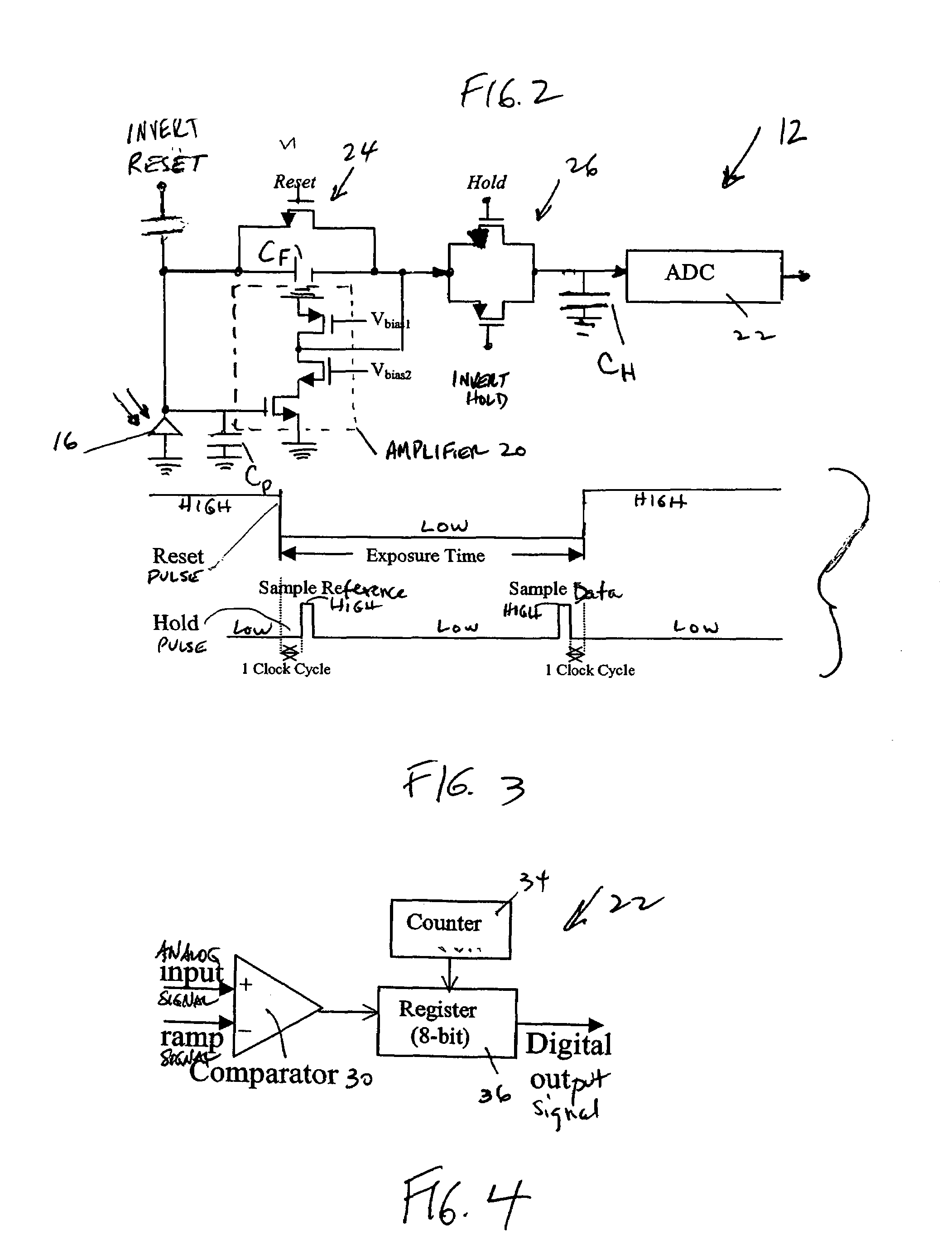Single chip, noise-resistant, one-dimensional, CMOS sensor for target imaging
a target imaging and one-dimensional technology, applied in the field of noise-resistant imaging sensors, can solve the problems of large, overall size of the ccd sensor, more total power consumption, etc., and achieve the effect of reducing cost and size, and reducing power consumption
- Summary
- Abstract
- Description
- Claims
- Application Information
AI Technical Summary
Benefits of technology
Problems solved by technology
Method used
Image
Examples
Embodiment Construction
[0022]Referring to FIG. 1, reference numeral 10 generally identifies a single, solid-state, complementary metal-oxide semiconductor (CMOS) chip having an analog front end 12 and a digital back end 14, both the front and back ends being integrated on the same, single CMOS chip 10. The chip is used for imaging a target, especially a one-dimensional coded symbol such as a Universal Product Code (UPC) symbol.
[0023]The front end 12 includes a linear array of pixels, preferably 512 to 4096 pixels in all. Each pixel includes a photodiode 16, a sample-and-hold (S / H) circuit 18, a high gain amplifier 20, and an analog-to-digital converter (ADC) 22 which are shown in detail in FIG. 2. All the other components in FIG. 1 are part of the digital back end.
[0024]The photodiode 16 converts incident light into an electrical analog signal. The photodiode has a lower white noise, dark current and fixed-pattern noise as compared to a phototransistor. The photodiode generally has a width between 4 μm an...
PUM
 Login to View More
Login to View More Abstract
Description
Claims
Application Information
 Login to View More
Login to View More - R&D
- Intellectual Property
- Life Sciences
- Materials
- Tech Scout
- Unparalleled Data Quality
- Higher Quality Content
- 60% Fewer Hallucinations
Browse by: Latest US Patents, China's latest patents, Technical Efficacy Thesaurus, Application Domain, Technology Topic, Popular Technical Reports.
© 2025 PatSnap. All rights reserved.Legal|Privacy policy|Modern Slavery Act Transparency Statement|Sitemap|About US| Contact US: help@patsnap.com



